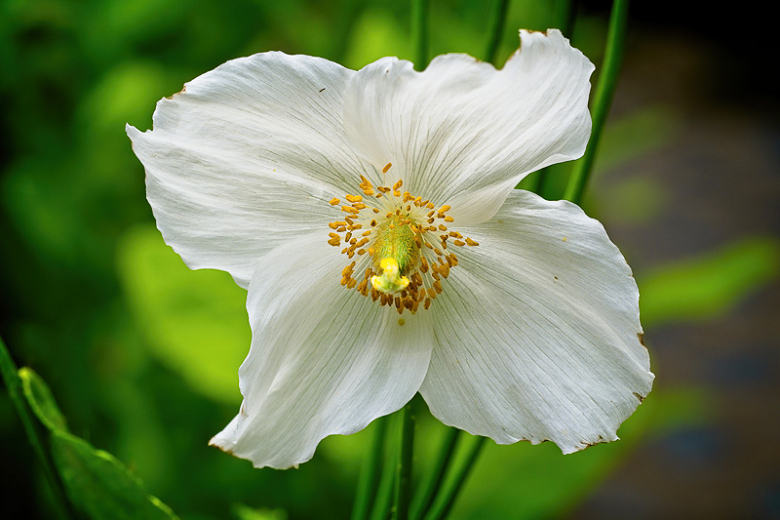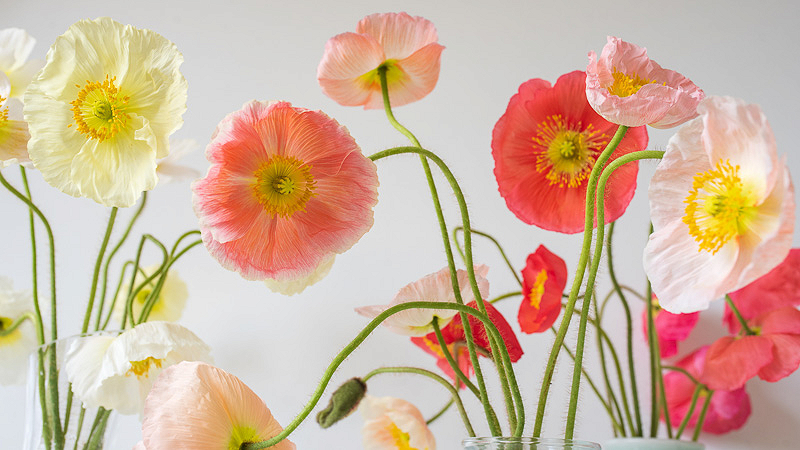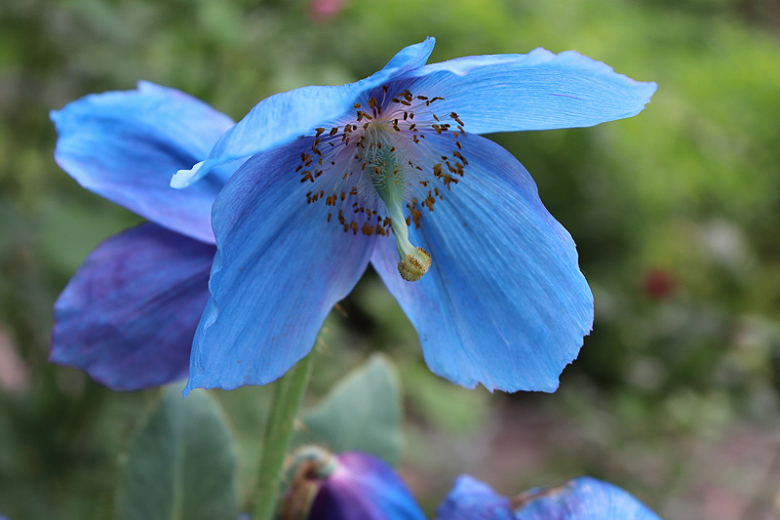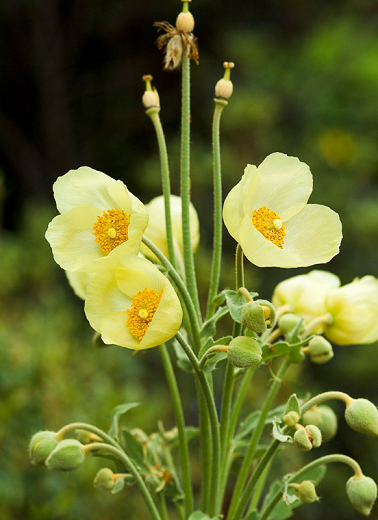Meconopsis baileyi var. alba (Himalayan White Poppy)
Meconopsis baileyi var. alba (Himalayan White Poppy) is a short-lived, clump-forming perennial boasting large, silky, shallowly cup-shaped, pure white flowers, 3-4 in. wide (8-10 cm), with contrasting golden stamens and a short ivory-white style. Borne in succession on erect leafy stems, the pretty blossoms arise from a basal rosette of hairy, oblong, blue-green leaves.
Meconopsis baileyi var. alba (Himalayan White Poppy) is a short-lived, clump-forming perennial boasting large, silky, shallowly cup-shaped, pure white flowers, 3-4 in. wide (8-10 cm), with contrasting golden stamens and a short ivory-white style. Borne in succession on erect leafy stems, the pretty blossoms arise from a basal rosette of hairy, oblong, blue-green leaves. They give way to narrow seed pods. Short-lived, Himalayan White Poppy will, however, persist and flower year after year, if given suitable conditions and care. Planted in small groups, the delicate flowers will brighten up your shady borders and draw attention from late spring to early summer.
- Grows in clumps up to 4-5 ft. tall (120-150 cm) and 18-24 in. wide (45-60 cm). Will happily self-seed in good growing conditions to create a lovely colony.
- Prefers part shade in humus-rich, slightly acidic, moist but well-drained soils. Make sure the soil has plenty of organic matter. Do not allow the soil to dry out during the growing season or get waterlogged in winter.
- This plant does not respond well to high summer heat and humidity but thrives in areas with cool damp summers. Shelter from cold, dry winds.
- Apply a balanced fertilizer in spring and mulch round plants with garden compost or well-rotted manure.
- Perfect for beds and borders, cottage gardens, and woodland gardens.
- Deer and rabbit resistant
- Cut back spent flower stems unless seeds are required.
- Propagate by seed, sown fresh and thinly in containers in a cold frame; light is needed for germination. May also be propagated by division immediately after flowering, though plants can be short-lived.
- May be affected by slugs and snails or downy mildew
- Native to the Himalayas.
Requirements
| Hardiness | 7 – 8 |
|---|---|
| Heat Zones | 5 – 8 |
| Climate Zones | 1, 1A, 1B, 2, 2A, 2B, 3, 3A, 3B, 4, 5, 6, 17, A1, A2, A3 |
| Plant Type | Perennials |
| Plant Family | Meconopsis – Himalayan Poppy |
| Exposure | Partial Sun |
| Season of Interest | Spring (Late)Summer (Early) |
| Height | 4' – 5' (120cm – 150cm) |
| Spread | 1' – 2' (30cm – 60cm) |
| Spacing | 18″ – 24″ (45cm – 60cm) |
| Water Needs | Average |
| Maintenance | Average |
| Soil Type | Clay, Loam |
| Soil pH | Acid, Neutral |
| Soil Drainage | Moist but Well-Drained |
| Characteristics | Showy |
| Tolerance | Deer, Rabbit |
| Garden Uses | Beds and Borders |
| Garden Styles | Informal and Cottage |





